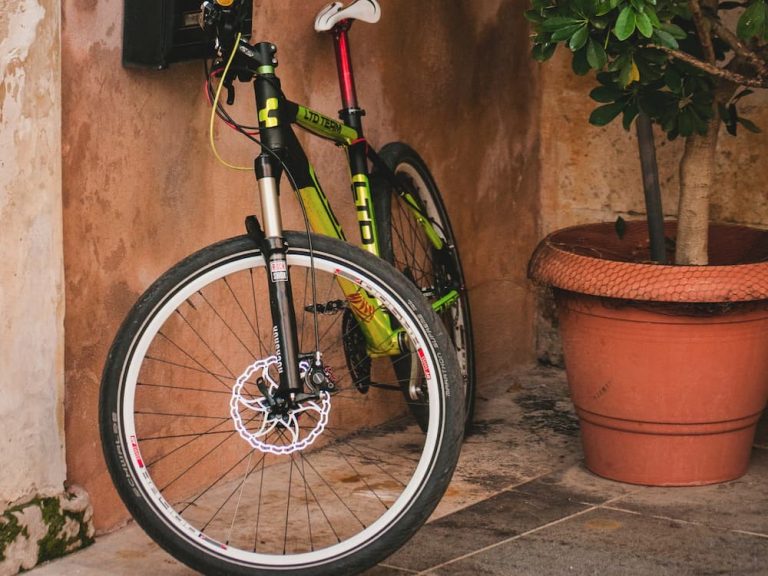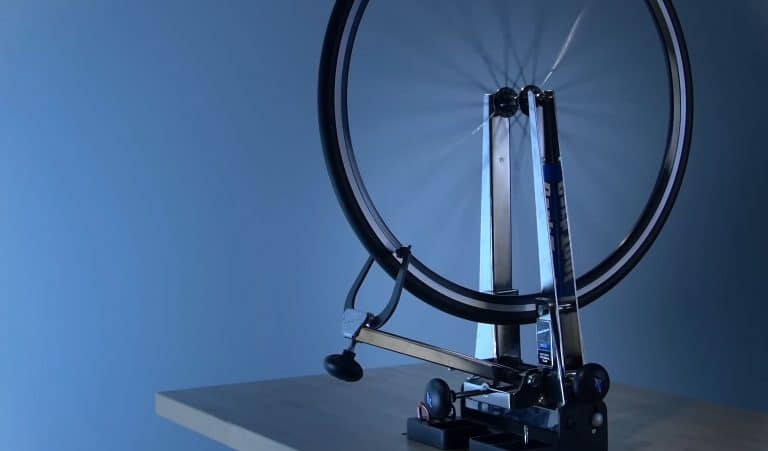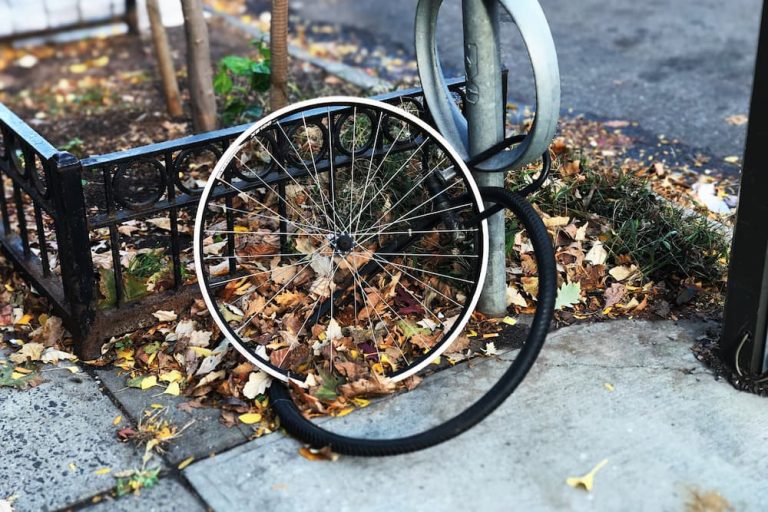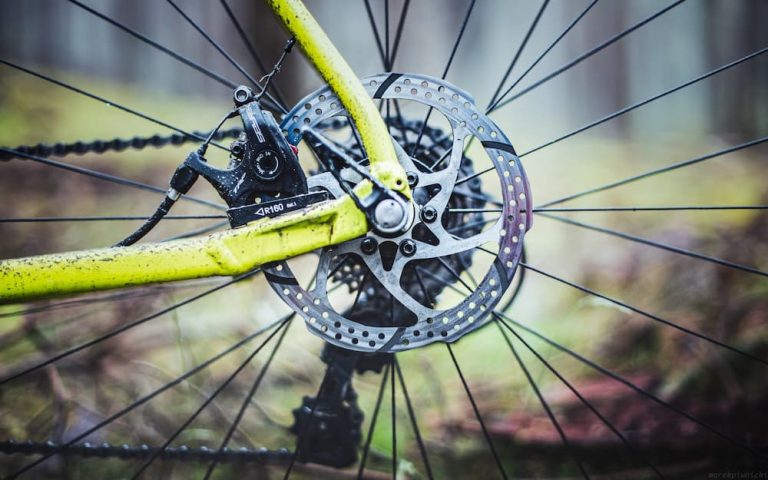Can You Use WD40 On Bicycle Brakes?
In the world of cycling, keeping brakes in top condition is essential, yet it often leads to a common question: should you use WD40 on them?
It’s a dilemma many of us face – reaching for that familiar can when brakes start to squeal. But here’s the catch: using the wrong product could lead to compromised safety on the road.
This article dives into this topic, offering my insights and experiences. We’ll discover the right ways to maintain your brakes, ensuring every ride is both safe and enjoyable.
As an Amazon Associate, I earn from qualifying purchases made through links in this post at no extra cost to you.
Contents
Can I Use WD40 On Bike Brakes?
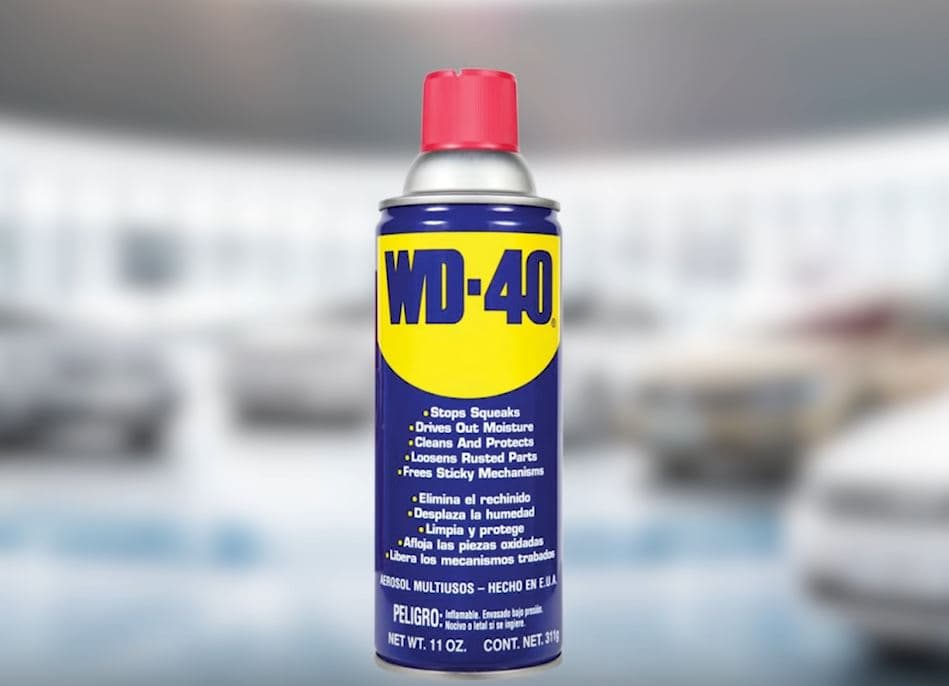
No, you should not use the regular multi-purpose WD 40 on bike brakes. In fact, experts suggest that you should never use this solution on your brakes, and if you do, you may have difficulty reviving your otherwise functioning bicycle.
Why You Should Not Apply the Regular WD40 On Your Bicycle Brakes?
WD stands for water displacement. The degreaser works its way by removing moisture from the part it has been sprayed. When sprayed on brakes, any lubricant, oil, or grease will minimize the friction on the part. In the case of a brake, which operates due to appropriate friction, it will become practically become unserviceable.
Furthermore, WD-40 will considerably diminish the pads’ braking power effectiveness. This means the stopping distance will be much higher than your usual braking distance standards whenever you are out on a ride. This is unsafe and makes your ride prone to accidents even on a spin in your local neighborhood.
Apart from the loss of friction and proper constriction of the brakes, a semi-greasy solution like the WD40 will also expose the brakes to further contamination.
Depending on how much WD-40 you have sprayed on your brakes, you might be unable to save your brake system. Some people suggest that it’s best to replace the brakes, as they won’t have their previous efficiency, no matter what you do. The choice between organic and sintered brake pads also affects your maintenance approach.
While we agree that replacement is the best solution, there are a few ways to retrieve your bike’s brake system to full force and power. Remember that this is only possible if you have not sprayed too much of the degreaser on your brake.
Can I Use WD40 Bike Degreaser On Bike Brakes?
Yes, you can use the WD40 Bike Degreaser on your bicycle’s brakes.
The WD40 Bike Degreaser is an excellent product for maintaining the pristine condition of your bike’s disc brake rotors. The manufacturer endorses it as a great product for cleaning the disc brakes.
Over time and use, dirt and grime start accumulating on your bicycle’s disc brake rotors. While you won’t feel an obvious difference from the beginning, you’ll slowly feel the bicycle offering reduced performance.
This is because the grinding of the dirt particles, while you ride, increases the wear and tear of the rotors. So, they deteriorate over time and offer decreased performance. With the WD40 Bike Degreaser, you can solubilize the grime and make it easy to clean.
With this product, you won’t have to take the rotors off for a deep clean. So, you can use these on bike brakes. In fact, we highly recommend doing so. It can be applied not only to the brakes but also to other metal parts, such as the drivetrain. Opt for non-corrosive brake cleaners to ensure long-term health of your brake system.
Related reading: Can You Use WD40 On A Bike Chain?
How do you remove multi-purpose WD40 spray from your bike brakes?
Contrary to popular belief, your bicycle’s braking system will not be completely ruined if you spray a small amount of WD-40 on your brakes. Understanding brake pad contamination is crucial in effectively cleaning your brakes.
Before throwing away the old, grease-stained brakes and getting a new one, try to save your brakes one last time. If none of the above solutions work, and your bike brakes are still out of order, you may have to replace them!
Here is how you may get your bicycle brakes to function again after using WD40 on them.
Related reading: How To Fix Squeaky Bike Brakes?
Alcohol Rub
Alcohol effectively removes any oil, grease, or lubricant containing solvents like WD-40.
For this, you can disassemble the brake pads at first. Take a clean wiping cloth and pour alcohol on it. You can also use alcohol pads. Use this to wipe the braking pad thoroughly. Before assembling the brake back to the cycle, ensure it is completely dry. Sanding them before the final use can be greatly useful as well.
This is perhaps the most efficient and easy way to eliminate all the degreaser that has gotten into your brakes.
Related reading: How To Clean Bike Brakes?
Brake Cleaner
You can attempt to wipe off all the WD-40 using brake cleaners. Remember that you might need a couple of cans before all the greeze is removed from the brakes.
Moreover, brake cleaners are widely available and can be found in any auto spare shop.
While brake cleaner sprays are effective, some of them are flammable. Before using brake cleaners, remember to use gloves and take adequate precautions as they are highly toxic and, in some cases, flammable. Hence, it is best to use the brake cleaner in an open and ventilated area.
Related reading: How To True A Bike Wheel Without A Truing Stand?
Torching or Heating
If you have used WD-40 on your bike brakes and have noticed signs of contamination from the degreaser, this could be an unusual but simple way to save your brakes.
Heat or torch the brake pad briefly to burn the remaining chemicals. It is also essential to remember that a complete cleaning of your rotor could aid in the process.
Wash and Scrub
Although less effective, this could be a convenient way to eliminate some of the WD40 you’ve splashed on your brakes. For this, use warm water and soap detergent.
Use a combination of rigorous scrubbing to wash off the greasy chemicals. Use enough water to rinse the detergent solution, followed by hours of complete drying. When it’s dried, use the acetone solution carefully to remove any remaining WD40. You can also use alcohol pads for the last step.
Related reading: Best Wheel Truing Stand Reviews & Buying Guide
Various brake cleaning techniques can be employed depending on the type of brake system. As you can see from this Reddit discussion, sometimes removing WD40 takes a lot of time and effort.
I got WD40 all over my disc brakes and now when I brake I go faster.
byu/jaytea86 inbikewrench
Using Other WD40 Products On Cycle Brakes
Generally, most WD-40 products are not recommended for bicycle brakes because they can degrade the rubber and plastic components and diminish braking performance. For disc brake maintenance, it’s vital to choose products that don’t compromise brake integrity. Hydraulic brake care requires specific products to maintain efficiency.
| WD-40 Product Name | Can it be used on bicycle brakes? (Yes/No) | Explanation |
|---|---|---|
| WD-40 Specialist® Cleaner & Degreaser | No | Can remove necessary lubricants and degrade brake components. |
| WD-40 EZ-REACH | No | The lubricant can impair the function of brakes and contaminate brake pads. |
| WD-40 Original Formula | No | Can degrade brake components and is not designed for high-friction surfaces like brake pads. |
| WD-40 Specialist Line (various products) | No | Most are not suitable for brakes; some could damage plastic/rubber parts or impair brake function. |
| WD-40 Specialist Degreaser and Cleaner EZ-PODS | No | Degreasers can remove essential lubricants and cause brake components to wear prematurely. |
| WD-40 Original Formula Precision Pen | No | Not specified for brake systems and can contaminate brake pads. |
| WD-40 Multi-Use Product with Big-Blast Spray | No | The spray can contaminate brake pads and is not suitable for brake mechanisms. |
| WD-40 Multi-Use Spray | No | Can contaminate brake pads and impair braking performance. |
| WD-40 as a Rust Inhibitor and Lubricant | No | Can contaminate brake pads; not designed for use in high-friction areas. |
| WD-40 Specialist® Bike Degreaser | Yes | It is designed for bikes, and it can be used on brake pads and rotors. |
Frequently Asked Questions
What is WD-40 Good For?
If any of your bicycle parts are stuck, you can rely on WD-40 to efficiently displace the part from its static position. When originally manufactured, the purpose of this solution was to perform degreasing, while protecting the metal parts removing moisture. Thus preventing rust and corrosion!
Why do people even consider using WD40 on bicycle brakes?
Some people might consider using WD-40 on bicycle brakes to displace water, clean the brakes, eliminate squeaking brakes, or address issues such as brake stiffness in subfreezing temperatures. Exploring various brake squealing solutions helps in addressing this common issue effectively.
Final Thoughts
Exploring the nuances of using WD40 on bicycle brakes has been insightful. WD40’s multipurpose version, while excellent for loosening components and warding off rust, isn’t ideal for brake systems. Its lubricating effect will diminish the crucial friction needed for effective braking and contaminate the brakes, raising safety concerns.
Conversely, the WD40 Bike Degreaser is a more appropriate choice for brakes. It is designed to cleanse without leaving slippery residues, so it helps maintain brake efficiency when used correctly.
From my journey in bike maintenance, I’ve realized the significance of selecting the right products. Incorrect choices will lead to extensive cleaning or even component replacement. Before using any product, you should recognize that each product has a specific role. This understanding will lead to optimal bike care and ensure every ride is safe and fulfilling. Regular maintenance is essential for brake performance optimization.

